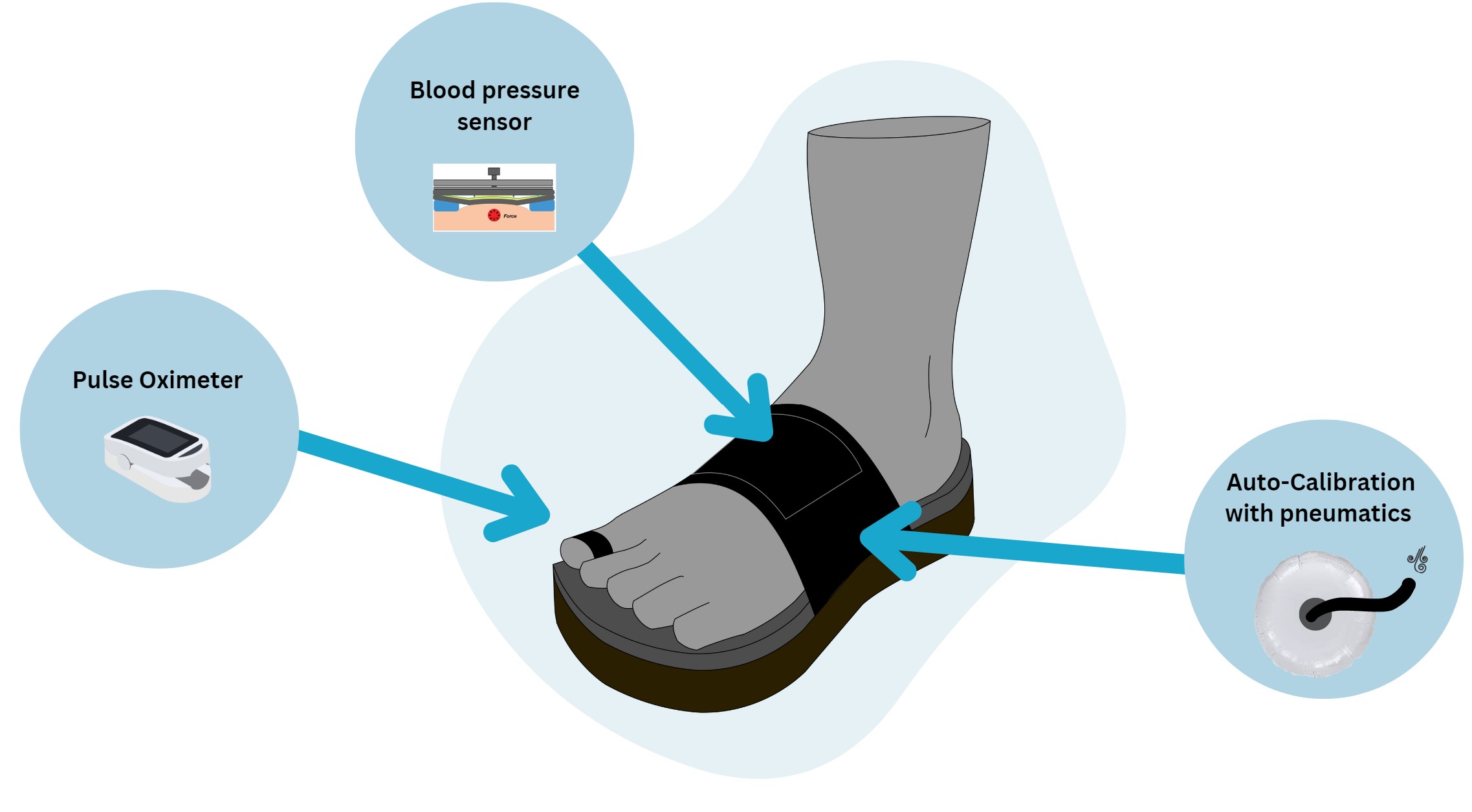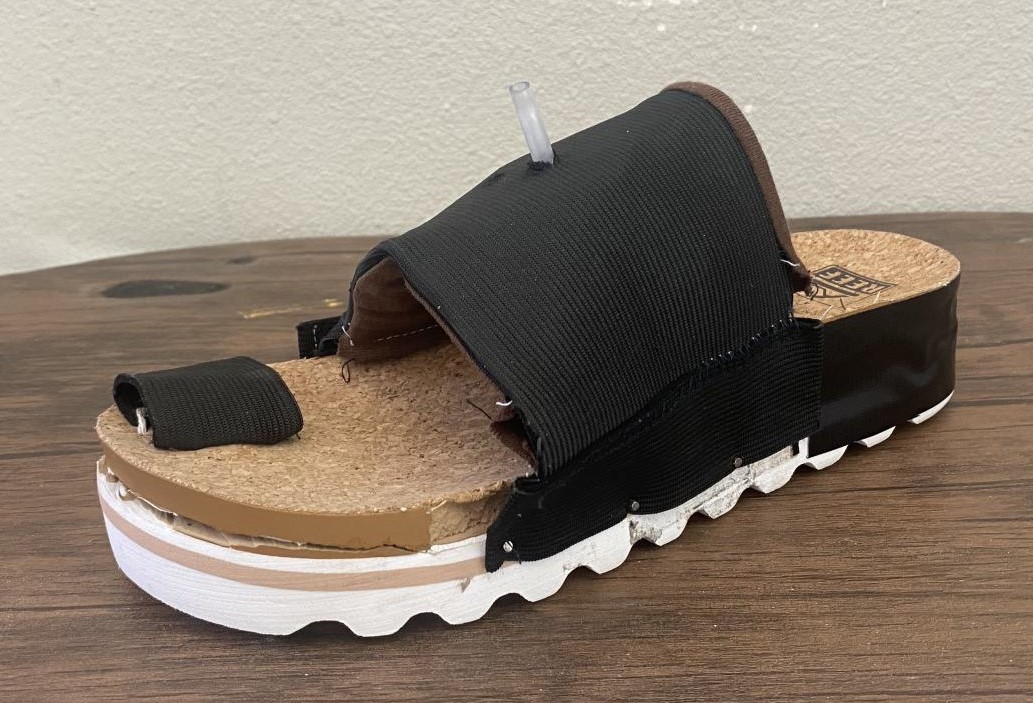The Product

Pulsera integrated a pulse oximeter and a continuous blood pressure monitor into a sleek slipper design for patients to monitor these metrics at home. The blood pressure is measured from the dorsalis pedis on the foot, and the pulse oximeter takes measurements from the toe. The automatic applinator cuff consists of an airbag, air pump, solenoid valve, and pressure transducer. When the user’s foot is in the slipper, the airbag will fill with air until the sensor presses on the user’s foot with the correct amount of pressure. The pulse oximeter has a toe strap that the user will slip their toe into for readings.

To use, all the patient needs to do is slip the slipper on their foot and relax for about 20 minutes to collect proper measurements. After 20 minutes, the patient can remove the slipper and repeat the process the next day. The data from the slipper will be sent automatically to a mobile app on the patient’s phone, where it will save the data collected. After several days, if the patient starts to show symptoms of preeclampsia, the software will alert the patient to consult a doctor. If necessary, the patient can send the data to their doctor for further investigation and diagnosis.
When a patient uses the Pulsera Preeclampsia Monitoring Slipper, she will be able to gather pulse oximeter and blood pressure data that can be used to help doctors diagnose preeclampsia from the comfort of her home. It is an accurate, affordable, and accessible device to gather essential data. The continuous blood pressure readings over the weeks of the pregnancy will ensure that preeclampsia symptoms do not go unnoticed as they are today. By detecting this life-threatening condition early, the mother can save herself from severe pregnancy complications, trauma, and a hefty hospital bill.
